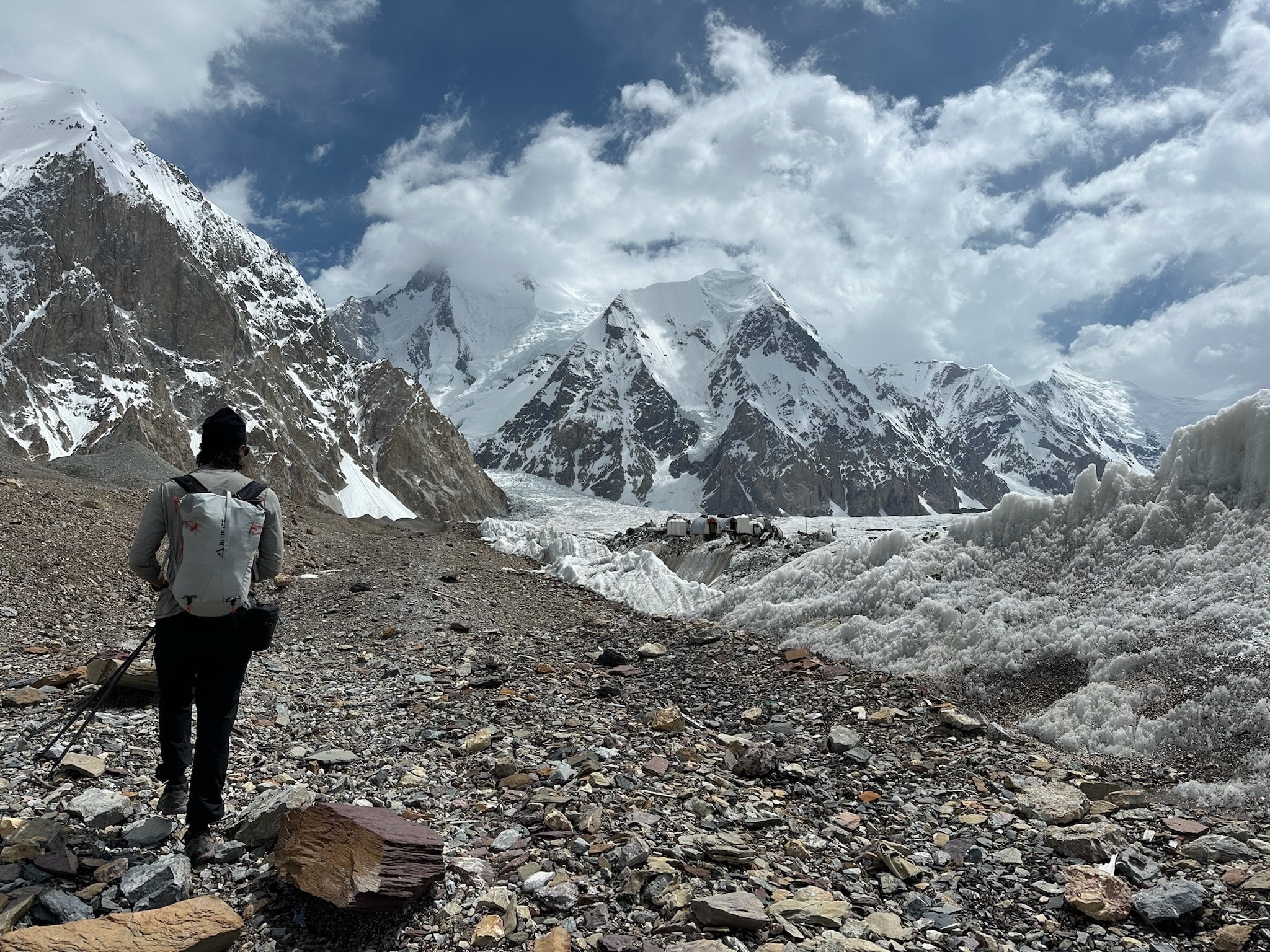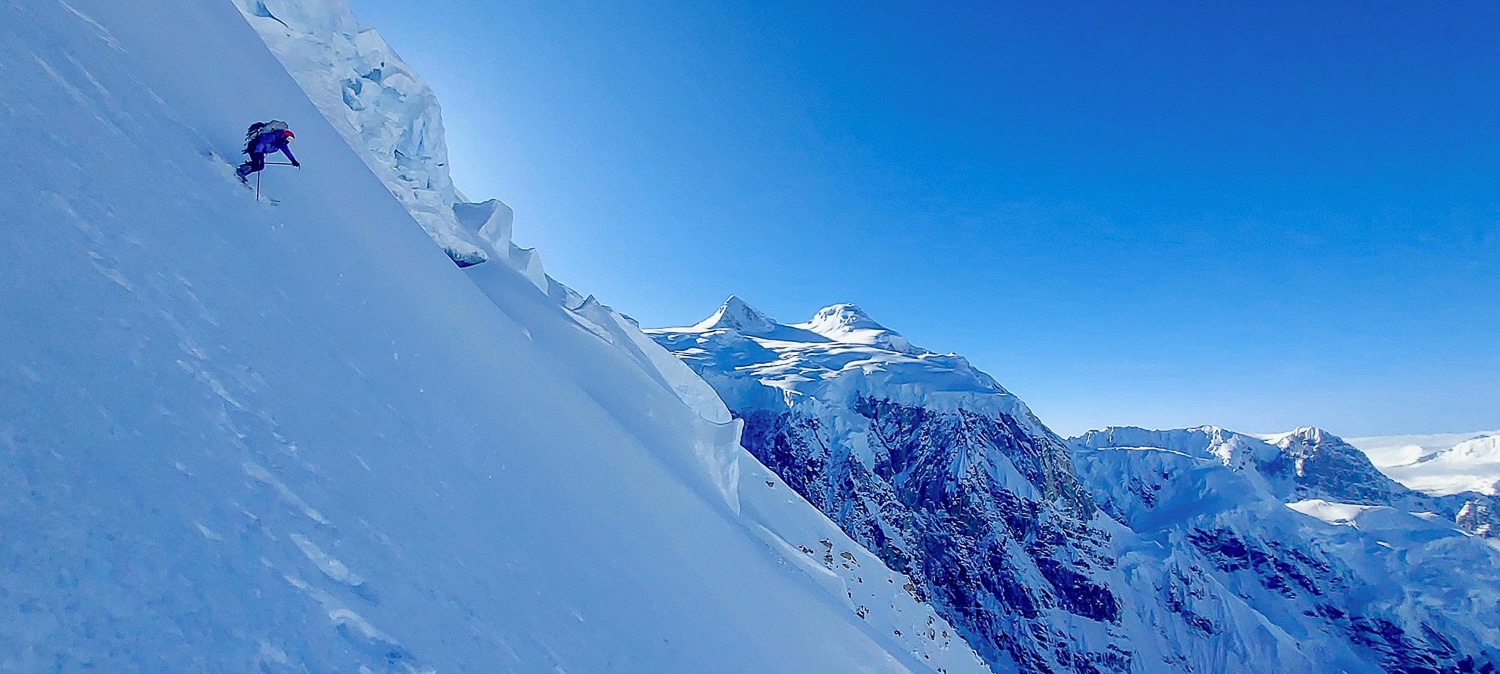Jason’s Notes
This is one of those gear reviews where we’ll backtrack after the intro. Although this is a first look, and more, we’ve been running around in the hills with the Arc’teryx Vertex Speed for many months. The Vertex Speed (which offers a built-in ankle gaiter to keep debris from entering the shoe, and also comes in a low-top iteration called the Vertex Speed Low) is intended as a hybrid trail runner. In other words, a shoe designed for outings where technical scrambling/climbing will be encountered. How technical, you ask? That’s up to you. However, we are aware of a few Vertex Speed adoptees who use the shoe to ascend low to mid-5th class terrain. Appropriately, the lugged sole boasts Vibram Megagrip, which, according to the marketing hype, is formulated for solid grip on dry and wet rock, and does, as claimed, offer sufficient (and even excellent) grip on dry rock. A modest yet robust toe bumper protects the toe box in the event you nail rocks or roots. The Vertex Speed has sufficient stiffness in/around the toe box to edge nicely while climbing. The stack height, generally speaking, is low, providing greater stability while climbing and hiking on more technical trails.


For runners/hikers, the sole is dual-density. Think stiffer and less forgiving in the forefoot, with more cushioning in the midfoot to heel. These are not, repeat, not, a cushioned trail runner. They feel somewhat firm underfoot. Further, from a fit standpoint, they do run narrow (as seems to be the general fit pattern for Arc’teryx kicks. Eric Carter, do you have a narrow foot?) That prolly makes them lighter, too. There’s less material overall.
And, which we return to in a bit, they are light. Registering around ~250 grams. Part of that sveltness is due to the tongueless and insoleless design. (The insole is non-removable. Folks requiring or desiring third-party insoles for comfort/stability are out of luck here.) The upper fabric is Matryx, which feels airy but also claims to offer exceptional durability at a reduced weight. (Matryx is a polyamide and Kevlar yarned fabric with a polyurethane coating produced by the French company Chamatex.) Other zones are laminated with a flexible laminated TPU reinforcement for added abrasion resistance.

Let’s briefly discuss sizing. Originally, I ordered a men’s 9 as I heard the Vertex Speed runs big. I most often trail run in a men’s U.S. 9.5. The 9s were too fitted for any running, and could have been passable for low-effort hiking with likely toe bang on the descent. For a more technical climbing fit, the 9s would have been perfect. Overall, the 9.5s have been comfortable.
From time to time, The High Route will review hybrid trail runner/climbing, approach, and alpinism shoes/boots for mountain approaches. That noted, over time, I have realized that for a ski traverse that requires walking to link sections, it’s often advantageous to bring a comfy runner rather than slog in a high-range-of-motion touring boot. Arc’teryx makes minimalist and light runners, which include the Vertex Speed. No doubt, on my next spring traverse with expected dry cross-country groveling, the Vertex Speed is coming along.
Aidan’s Notes
Aidan Whitelaw, who has been using these for guiding applications this summer, does find the rubber sufficiently sticky for climbing, but has found that, like a climbing-specific shoe, sizing is key. He sized this shoe for long approaches and long scrambles, which means he’s experienced some expected lack of precision when on more technical terrain. Make sure you tighten them up for more technical portions of your day.
As for times when foot jams are on the menu, “painful” is how Whitelaw describes the experience. A more traditional approach shoe, like the La Sportiva TX4 EVO ST, is probably a better climbing-focused option that handles foot jams with less discomfort.
The other issue Whitelaw notes among his peers using the Vertex Speed for guiding is the generally low arch, which can be interpreted as the shoe’s minimal arch support, considering the shoe’s built-in insole can underperform. This tended to bother some when carrying heavier pack loads. When choosing lightweight yet highly capable hybrid kicks, like the Vertex Speed, think about your pack’s weight before racing up the trail if you require more support. These kicks are more along the lines of a minimalist trail runner than a highly supportive approach shoe. Durability wise, Whitelaw says the Vertex Speed has held up admirably. His main point of reference is the Scarpa Rapid, a similar shoe to the Vertex Speed that was a fine companion but did not hold up to a month of heavy use.
For as light as they are, Whitelaw has found the Vertex Speed a great quiver shoe for personal and work-related missions. Which means using the shoe on Teton traverses with climbing up to 5.7 and rambling in the Beartooths.
Gavin’s Notes
Arc’teryx shoes have an interesting history. Like many things Arc’teryx makes, they have often innovated. Unlike many things Arc’teryx produces, their shoes haven’t always been great. Their 2010s shoes were marked by having a liner and outer boot, like a ski boot or a double mountain boot. From there, a phase of Amer Sports collaboration ensued (Arc’teryx and Salomon are Amer Sports brands), where Arc’s shoes broadly mirrored Salomon’s offerings, which were good but not unique (I did love my Konseal LT approach shoes from the tail end of this ‘Salomon Era’). Fast forward to the last few years, and Arc’teryx has put significant time into their in-house footwear design and production (including our late, great friend Mike Gardner).
I’ll admit to generally being a fan of Arc’teryx shoes. The Norvan LD series running shoes have always fit me well and held up well for a nice, cushy running shoe. The Konseal approach shoes are excellent and very comparable to the Sportiva TX Guide, especially after I sent them in for a resole with Unparallel dot rubber (though I have yet to try the newest model). This spring, the Vertex Speed caught my eye as an attempt at the hybrid approach shoe/running shoe.
- I’ve historically enjoyed lower-riding, more firm and responsive running shoes, only slowly converting to more cushy shoes over the last few years. The vertex speed is more like the shoes I’ve liked in the past.
- I have both the low and high models. I used the high-top for spring skiing approaches, and it is great for keeping debris out. However, the low option is nice for hot summer days. The low knit gaiter does loosen some and lets in gravel/sand like a normal shoe, though.
- I have been guiding/hiking in them, either untied or loosely tied, only tightening them down for downhill running or harder climbing. The knit sock is super comfy and retains my foot well.
- They climb well. I am wearing a half size bigger than my approach shoes, which is nice for downhill running but limits edging capabilities. The flat lug profile provides ample stickiness for slab climbing.
- They are the best shoes I’ve used for running/climbing objectives like the OS/Exum ridge on the GT, Skypilot peak outside Squamish, etc., where low 5th class climbing and lots of running combine. I’ve also been bringing them on trips, where I may have previously brought approach shoes and running shoes, such as on a climbing/running/hiking guiding trip in the Dolomites this summer.
- They are sensitive, for good and bad. My feet feel more beat up after running on rocky/rough trails relative to a modern cushy shoe.
- Some complaints have been made about the narrow midfoot/heel. It isn’t something I’ve noticed.
- Durability is good so far with lots of use since early spring, the upper is lightweight and has an abrasion-resistant feel while feeling airy.
Vertex Speed Pricing: $190.00






Leave a Reply
You must be logged in to post a comment.